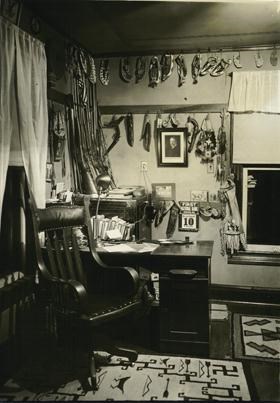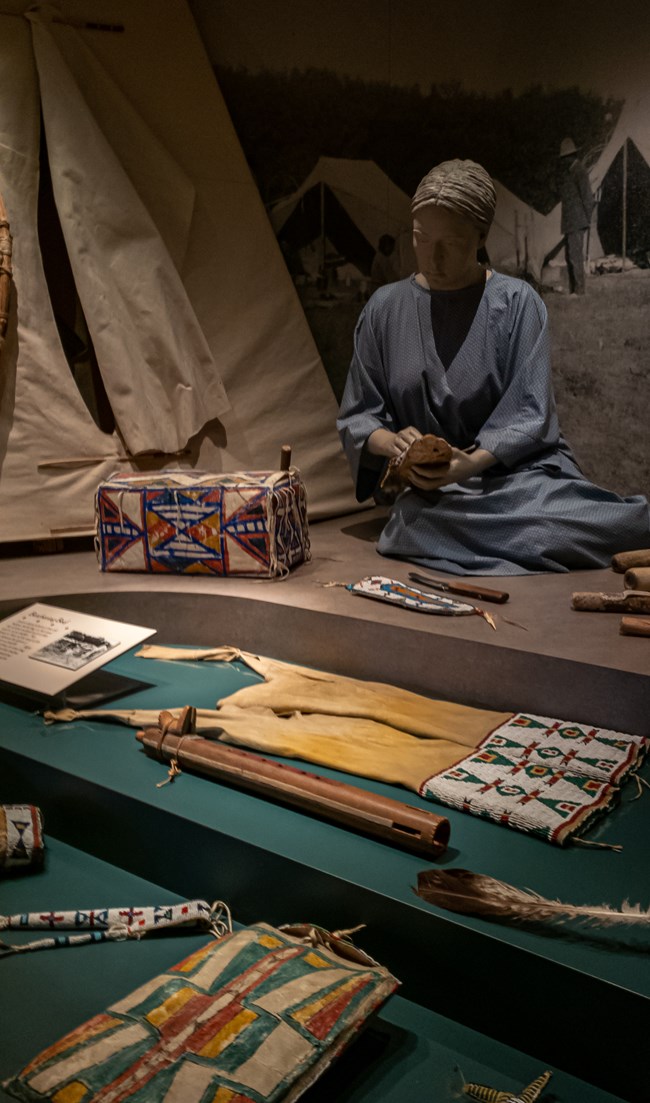
National Park Service/Cook Collection. Don't let the name fool you. Agate Fossil Beds National Monument features more than world-class fossil exhibits. One of our most surprising discoveries is the Cook Collection, and it has nothing at all to do with fossils. The James H. Cook Collection of Lakota ArtifactsThe Cook Collection consists of Native American artifacts the Cook family received in the late 1800s and early 1900s from close family friends like Red Cloud, Chief of the Oglala Lakota. Cook and Chief Red Cloud: An Unlikely FriendshipJames H. Cook first arrived in western Nebraska in the early 1870s. He worked as a cattle driver, or cowboy, for a Texas outfit. The 17-year-old's chance meeting with a 53-year-old Red Cloud didn't happen until 1874. It was arranged by Baptiste "Little Bat" Garnier, a mutual friend. As the story goes, fossils played a vital role in that meeting. 
The Gifts: From the Lakota to the Cooks, and from the Cooks to the American PeopleIt was during these visits, too, that the Lakota, Northern Cheyenne, and others gave gifts to James and his family, often in return for receiving beef and hides they later tanned and painted. Some of these gifts were made especially for the Cooks, including buckskin suits for James' sons Harold and John, gloves, and the painted hide showing the Battle of Greasy Grass, also known as Custer's Last Stand. Other items—Red Cloud's shirt, three generations of the Red Clouds' pipe bags (one each belonging to Red Cloud, his father, and his son), and one of Crazy Horse's whetstones—were very special to those who gave them to James. |
Last updated: September 17, 2021
